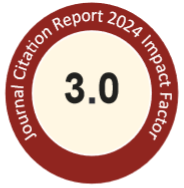Abstract
Thin-layer chromatography (TLC) was used to evaluate the behavior of ivabradine in various chromatographic systems. The mobile phases used were aqueous (methanol-water and acetonitrile-water) and non-aqueous (methanol-acetonitrile and methanol-dimethyl sulfoxide) in a wide range of concentrations (0-100%, v/v). The stationary phases used were high-performance TLC plates: Kieselgel 60 F254 S, RP-2 F254 S, RP-8 F254 S, RP-18 F254 S, RP-18 WF254 S, Kieselgel 60 CN F254 S, Kieselgel 60 Diol F254 S, and Kieselgel 60 NH2 F254 S; and TLC plates: aluminum oxide 150 F254, cellulose F, and polyamide 11 F254. The usefulness of various mobile and stationary phases in the separation of ivabradine was demonstrated. Retention mechanisms as well as the Soczewiński-Snyder equation are discussed. Copyright © 2013, Food and Drug Administration. Published by Elsevier Taiwan LLC. All rights reserved.
ScienceDirect Link
Recommended Citation
Pikul, P.; Nowakowska, J.; and Ciura, K.
(2013)
"Chromatographic analysis of ivabradine on polar, nonpolar and chemically modified adsorbents by HPTLC,"
Journal of Food and Drug Analysis: Vol. 21
:
Iss.
2
, Article 8.
Available at: https://doi.org/10.1016/j.jfda.2013.05.006
Creative Commons License

This work is licensed under a Creative Commons Attribution-Noncommercial-No Derivative Works 4.0 License.
Fulltext URL
https://www.sciencedirect.com/science/article/pii/S1021949813000070/pdfft?md5=9f8f8a7db6784bc533bf1b105ca94bba&pid=1-s2.0-S1021949813000070-main.pdf
Included in
Food Science Commons, Medicinal Chemistry and Pharmaceutics Commons, Pharmacology Commons, Toxicology Commons

